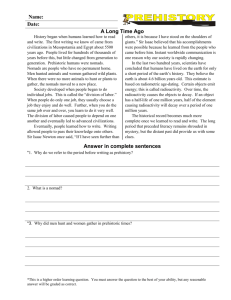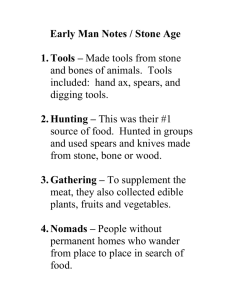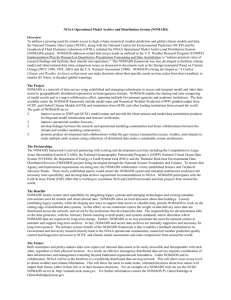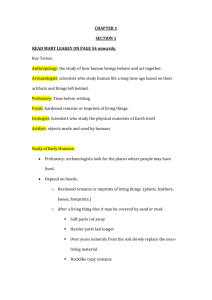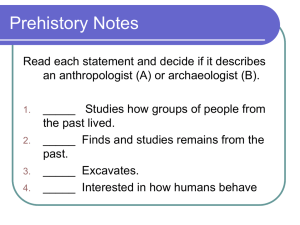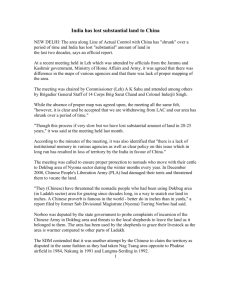Final Draft of the PhD proposal
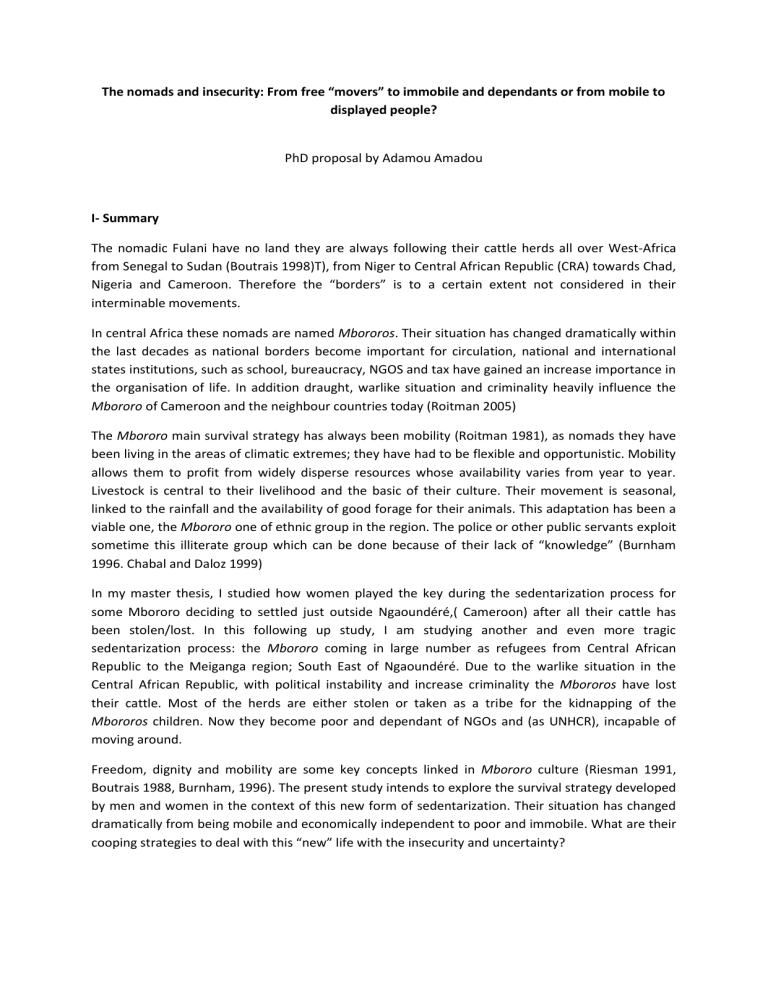
The nomads and insecurity: From free “movers” to immobile and dependants or from mobile to displayed people?
PhD proposal by Adamou Amadou
I- Summary
The nomadic Fulani have no land they are always following their cattle herds all over West-Africa from Senegal to Sudan (Boutrais 1998)T), from Niger to Central African Republic (CRA) towards Chad,
Nigeria and Cameroon. Therefore the “borders” is to a certain extent not considered in their interminable movements.
In central Africa these nomads are named Mbororos. Their situation has changed dramatically within the last decades as national borders become important for circulation, national and international states institutions, such as school, bureaucracy, NGOS and tax have gained an increase importance in the organisation of life. In addition draught, warlike situation and criminality heavily influence the
Mbororo of Cameroon and the neighbour countries today (Roitman 2005)
The Mbororo main survival strategy has always been mobility (Roitman 1981), as nomads they have been living in the areas of climatic extremes; they have had to be flexible and opportunistic. Mobility allows them to profit from widely disperse resources whose availability varies from year to year.
Livestock is central to their livelihood and the basic of their culture. Their movement is seasonal, linked to the rainfall and the availability of good forage for their animals. This adaptation has been a viable one, the Mbororo one of ethnic group in the region. The police or other public servants exploit sometime this illiterate group which can be done because of their lack of “knowledge” (Burnham
1996. Chabal and Daloz 1999)
In my master thesis, I studied how women played the key during the sedentarization process for some Mbororo deciding to settled just outside Ngaoundéré,( Cameroon) after all their cattle has been stolen/lost. In this following up study, I am studying another and even more tragic sedentarization process: the Mbororo coming in large number as refugees from Central African
Republic to the Meiganga region; South East of Ngaoundéré. Due to the warlike situation in the
Central African Republic, with political instability and increase criminality the Mbororos have lost their cattle. Most of the herds are either stolen or taken as a tribe for the kidnapping of the
Mbororos children. Now they become poor and dependant of NGOs and (as UNHCR), incapable of moving around.
Freedom, dignity and mobility are some key concepts linked in Mbororo culture (Riesman 1991,
Boutrais 1988, Burnham, 1996). The present study intends to explore the survival strategy developed by men and women in the context of this new form of sedentarization. Their situation has changed dramatically from being mobile and economically independent to poor and immobile. What are their cooping strategies to deal with this “new” life with the insecurity and uncertainty?
II-General Introduction: Nomads in the context of war and high banditry
This study addresses the issue surrounding the construction of places and home by mobile and displayed people (nomads) in the context of national and international borders highlighted by the insecurity. The challenge is to use the focus of the way space is imagined.
Apparently nomads live in what (Said 1979) has called a “generalized condition of homeless”. Indeed nomads’ movements are always beyond borders (Akhil. Gupta, James. Ferguson 1992) Nomads’ culture overlap several states transnational business and lie at the same times both the space and place. This reality reveals their everyday life system and somehow their identity. Though nowadays this fact becomes more and more a mindset than a truth, all effort which has tend to change it by force or to stop them moving around ended up to a drastic consequence.
West Africa nations have a rich heritage of nomadic civilization. Like (Stephan Baas 1996) remark it among Buryat and Kazakhstan people, traditional forms of nomadism were widely practised by pastoral nomads herding cattle or camels across the vast dry hinterland since the at least the 5 th century according to the historical and archaeological records (Christiane Saidou 1976), however in the few last decades the situation of nomads there has changed as well. In Niger where Touaregs and
Fulani are 20% of the 12, 9 population, these nomads groups are facing extreme hardship as a result of food crisis. They are loosing their animals which are their means of survivals (See the international
Charity Oxfam report 2005)
The situation of the nomadic people in the frontiers of Cameroon, Chad, Nigeria and C.A.R in particular is in radical change. The context is that, in this particular zone, nomads have settled down massively. We encounter a huge number of Mbororos refugees coming from C.A.R and Chad, but also more and more settled Mbororo who use to be nomads inside Cameroon. But knowing the Mbororo life style (nomadism) one cannot immediately affirm whether their recent settlement means a new conception of “Home” or not. Here I realise a new situation in which mobility encounters sedentary.
Some factors have contributed to accelerate this event:
Population growth and jobless in Africa is one of the factors of this situation (Saibou Issa, 2003)
Cameroonian population e.g. has increased of more than five millions persons in less than twenty years. Since the main activity of its population is the cultivating, agriculture has become the main economical resource. This fact leads certainly to the span of the farms and in the other side, the narrowness of the bushes. Animals hardly get enough grass to feed them.
The second and the main factor of settlement, is the insecurity in the bush. The civil war in Chad and in the Central Africa Republic has increased the robberies activities both in town and in the bushes where some rebels have settled. These robbers kidnap the nomads’ children in the bush and ask a huge ransom otherwise the kids are certainly killed. Many children have been simply victim or killed out of this situation. The guns circulate from hands to hands. Rebels rely on the local population in the villagers and nomads in the bushes are asked to provide them both money and food for their survival. Thus nomads have no option than settling in town or in mainly in the peripheries. Mainly, they settle in Cameroon where safety is more or less considerable. However, nowadays the situation is becoming the same even in Cameroon. A local news papers 1 has estimated that the total amount
1 Oeil du Sahel no 283 of the 23th Jun 2008
of 1.343.895.500 Fcfa has been paid by the Mbororo to the robberies as ransom, about 143 persons were killed and 110017 cows were taken away by these criminal plus many devastated villages. This result is of one of the three Northern Provinces of Cameroon alone. The consequence is that nomads have lost both their herds and lives.
I should underline that the growth of the new technology such as mobile phone has played an important role in increasing the criminals’ strategies. It facilitates the contact between bandits in the bushes with their patrons in town who guide them and gives them information about the arrival of the army after their criminal operation.
The last factor is both cultural and political. Nomads are few or not represented in the State level.
Thus they feel like settling down to send their children to school is one option to come up with their situation. This is what I have called “free settlement” in contrast of “forced settlement” in the two first situations stated above.
Out of what we have said, this study concern is how nomads groups deal with borders and the forms of displacement and re-making which take place in the Central Africa sub-region. How does the national/ transnational borders and insecurity intervene in people's lives? How are “culture rights” experienced within and across socio-legal, social-cultural and physical borders? In what ways are national/transnational nomads affected through movement, separation, re-settlement, and different understandings spaces concept and belonging? What are the roles of news technologies like mobile phones in forming, un-making and mediating these settings?
III-The theme:
Settling or “nomadying”: Nomads confronting borders: redefinitions of identity in relation to conceptualisation of home
Insecurity and the setting/imposing of external and internal borders upon mobile people/nomads, has lead to the loss of their livelihood.
In this followings line I will analyse the concepts of Mobility and Insecurity.
-Mobility
Mobility or/and migration has been for a long time, the Mbororo’s life style and the main strategy to cope with the nature’ struggles. Always a vast and rich space in term of grasses is needed (Stenning
1959; Riesman 1984; De Bruijn et al. 2001; De Bruijn 2007) to feed their animals. It is a longing of a healthy pastoral bush as well. “Ladde yamre” the bush which has enough water, good quality of grasses and no flies that can kill cows (the mouche tsé-tsé e.g). Nomads have developed various strategies to cope with the harshness of the environment. One is indeed being mobile (upcite).
According to the seasons they move from one place to another, crossing and re-crossing frontiers and borders. However this strategy is indeed a ground of their vulnerability in term of land owner. I mean nowadays mobility seems not to be efficient.
Here the concept of mobility needs a clarification: The life of the Mbororo’en is characterised by the everyday and every season movement. Herding itself requires mobility. The transhumance is mobility and migrating from an area or a region to settle in another is mobility.
Mobility as a way of living is not a Fulani proper alone. All nomads practice it as a strategy to cope with the realities of their environment. This is to refer to the Fulani, the Touaregs or the Bata fishermen, the Sámi, the Eskimo… are nomads as it has been demonstrated in Bjørn Artsen(1998) film, “The fishes come with the rain”. (Oumar Diop, 2004) has confirmed the same case amount the
GuetNdar fishermen of the Saint-Louis (Senegal) who use to migrate from the Senegalese and
Mauritanian border according to the abundance or not of the fishes in this part of the world.
However in the normal time, this is what I call “free mobility”. They move when the want and settle where they want. Far to underestimate the past mobility which has been some time harsh as well, as it is shown by Iliffe (1987) who argue that the poor in Africa, shows that nomads were always pushed to move by drought war etc. and the same for the theory of nomadism as developed by Khazanov; who is of the opinion of nomads and war is an interesting angle, the recent mobility can be considered as more “forced mobility”. The works of Issa Saibou (2006) and of Keitta Naffet (2004) are on this line. The first has underlined how the criminality in the Cameroonian, Chad and Republic of
Central Africa’s frontiers laid the migration of the Mbororo people across borders. In fact the growth of criminality in this area is the consequence of the war in Chad and C.A.R: « Sur le terreau de cette criminalité combinatoire de l’agression, du trafic d’armes et de la contrebande des métaux précieux, s’est développée une économie de crime qui profit d’un contexte de crise et dont les pasteurs
Mbororo et les mercenaires Tchadiens en activité en Centrafrique sont les acteurs désignés » (Saibou
Issa 2006 :4)
Naffet has made the same remark on his study on the impact of the Ivory Cost war on the Malian population in Mali. (Naffet 2004)
After all, nomads conceive mobility as compatibles with the belonging to a place. If a Mbororo ask you to come to his place don’t wonder if you don’t find any house. Home doesn’t necessary mean building or village but the feeling or the relation with a set environment. That is why now, even though nomads are found in the refugees camp and live to a fixe place, that doesn’t imply automatically the feel at home. In the same way, new generation of Mbororo in town do not necessary feel strangers. This is where the complexity of the “home” concept occurs.
-An analytical frame of the insecurity concept from the nomadic perspective
The concept of insecurity belongs more or less to a notion of the past for some Mbororo and which can not be truth for many youth in town today.
In fact nowadays, criminality has drastically growth in the Central African sub region. Its manifestation varies from place to place and the strategies (mobility) developed by the nomads have proof their inefficiencies. Furthermore the criminals have developed their line of attack according to the development of new technologies of communications. Waiting the traders’ cars in the road in order to extort them money, as the so called “Coupeurs de route”, is no longer a unique ways of operating. As far as the nomads are developing the strategies to secure their families, the banditries are developing theirs to increase the horror. Kidnapping is the most recent one.
As of the Mbororo’s, (Dorothee Guilhem 1976) has done an important work demonstrating that having caws is the first step of being secure. Caw is a symbol of nobles and wealth. If they have caws they feel in security and confidence vis à vis of the difficulties of world. Waking up and seeing a caw in the souroundings is more essential than anything in the world. Paradoxically they are not seeking money from that (Abdoullahi Baba: 2004). It is mostly a self satisfaction, a sign of success and for the milk. Dorothee writes about the importance of the herd in Wodaabe life “La vache est une ressource
économique mais elle symbolise une mode de vie, car la grandeur et le gloire de tout Bodaado est la
vache : sa force, sa vie…le troupeau c’est la vie. C’est la nourriture. Le troupeau, c’est la force, c ‘est la seule sécurité. Le troupeau c’est le prestige, l’estime des autres, c’est la gloire. Alors le manque de troupeau, c’est la moquerie, la honte (Maliki, 1985:54).le troupeau et son berger sont unis par des
liens étroits. Sow, (1966) in Dorothee, (2005:1)
If nomads can not longer secure their life and their cattle because of the criminality in the bush, then their stay in that bush wouldn’t be possible and their existence is even more in danger.
For Mbororo security is link to freedom; Freedom of moving (migration), freedom of living in a wide space and a freedom of not being controlled by anyone. It is known that a presence of one stranger can make a Fulani feel being in the public. (Djingui Mahmoudou 2001). I think because of that, they are reticent to settle down but nowadays they don’t have another option except In the North-west urban towns of Cameroon where youth have found an alternative to the nomads’ tradition way of mobility. Many are engaged in driven taxi or Bus from town to town, the rest of nomads’ people in
Cameroon are more hanging around than moving.
What are the consequences of the situation?
I assume that from nomadism to sedentary, the Mbororo people open the new page of their life in many sides: environment, economic, politic, security, cultural, gender and social elements.
Environmentally, their common and favourite space has changed. They are quitting the zone that they master the best to a new place where they are consider as strangers with all what it imply as consequences. Economically, nomads are losing a considerable heritage. Their resources are their cattle but in town they have lost it. Because of their lack of “education”, politically they are not represented in the national assembly and in the government. The last but not list, culturally they are in between two worlds. The same remark is taken in consideration amongst Pygmies of the southern
Cameroon (Dieudoné Onwga, 2007). They are loosing their custom before even reaching the new one. The last and most important consequences is that nomads are running from the bush for security reason while in town they became just dependant of either humanitarian Organisation or in certain way a marginalised group. In the end nomads wonder where to go and where to consider as home. Their chaotic situation is described by Saibou who write this "Pour les Mbororos qui se sont installé dans le Nord- Est de la Centrafrique pour fuir les coupeurs de route dans le Nord -Cameroun, un nouvel exode s’impose, soit vers le Tchad, soit vers l’Adamaoua [...] Mais la migration ne procure pas un asile sécurisant dans la mesure où les zones de pâturages dans lesquels les éleveurs se replient correspondent à des espaces fréquentés par les groupes armés. Dès lors fuyant les attaques des bandits, les éleveurs se retrouvent au contact d’autres bandes d’agresseurs si ce ne sont les
bandes Centrafricains qui les poursuivent " (Saibou, 2006 :124)
Geographical framework and the actors of intervention
Map localising the field of the study
IV-Interveners and actors that involve in the field of the Mbororo
I intend to conduct my research and fieldwork alongside of the frontiers of Cameroon, Chad Central
African Republic and Nigeria; Particularly in Northern and North-West of Cameroon. The region is covered by the three northern regions of the Grand-north, the North-West region of Cameroon, the
West-south of C.A.R, the South-west of Chad and maybe of Nigeria.
In the North-West region of Cameroon however the situation is a bit different. Men have tried to lead conjointly farming and herding for those who have still some cattle. In East and North regions many of the settled Mbororo are simply refugees. They are respectively from C.A.R and Chad running away from the civil war. They depend on the humanitarian organisations.
I have observed UNHCR and also some humanitarian organisations such as MSF and WAP (that are in fact representatives of the international States) are contributing to “reduce” the effect of the situation. As almost all the nomads living in that region are refugee, I have decided to emphasize on the UNHCR role. I have noticed some preliminaries observations: The first is in the East province and in the Mbere division in the Adamaoua region of Cameron where there is a large number of refugees from C.A.R My observation is that the humanitarian Organisations are willing and quite good faith to contribute to ameliorate the refugee situation, but from anthropological point of view, I have noticed that their approaches seem to me inappropriate. I call it “from top to the base” approach. These
NGOs are coming as the “givers” only. The relation between them and the population is just mechanic I should say. Considering the socio-cultural aspect of the Mbororos this method might not of a great help for them. A new approach should be look upon.
-The Mbororo Social and Cultural Development Association (MBOSCUDA) or the business on indigenous industry?
Having examined the recent situation of nomads, some elites among the Mbororo society have decided to initiate an Organisation which is designed to sensitize them about their rights vis-à-vis to the Cameroonian State, and then to revitalise their disappearing culture. The organisation is named
Mboscuda (Mbororo Social and Cultural Development Association). I assume that this NGO has been of great contribution to the nomads’ wealthfare conditions in Cameroon. A lot of Mbororo children
haven been registrated to school, the schools for adult were initiated; women initiate some tailoring ateliers with the help of Mboscuda with its partners. A priori one most say that through the effort of
Organisation, Mbororo from Cameroon come to be known around the whole world. Mbororos and the Pygmies are now recognised as minority and indigenous ethnic group in Cameroon. However, this has not only a positive aspect. Mboscuda with the nomadism mindset have developed some idealism of Mbororo life style which many Mbororo do not recognised themselves. The Pulaaku has been idealised and codified in a way that people are instrumentalized and directed for others personal business and interest. The marginalisation of the Mbororo is used dramatically in a way that always they are seeing only as victims though many involve in cruel affairs. Thus the organisation, per inadvertence I hope, is participating more in acculturation than revitalisation by codifying many
Mbororo cultural contains.
The role of the State is limited of sending special group of soldiers for the intervention in case of attack. But usually the actions of these soldiers are not efficient due to the limit of logistic and pragmatism. Another issue with the State is the policy of the ethnics group’s governability in
Cameroon. The State has recently developed in facto or in jure the participation and contribution of the different ethnics and regions in the government. This is what is being called “la politique de l’équilibre régional” 2 . Looking to this present situation of settled Mbororos whether they are refugees or not, the capacity of their participation in the State governability may be questioned.
V- Case of studies
Some works have been done in a domain which is more or less related to this study by numerous scholars and have to be taken in consideration. The first and most interesting study done in the northern Cameroon has been done by Saibou Issa in his various researches. In 2006 he conducted a study on the new strategies used by the banditries to perpetuate their activities in the bush among the Mbororo society. This new strategy is kidnapping of children, women and the elderly. In the paper intituled “La prise d’otage comme nouvelle stratégies du banditisme: Une Nouvelle modalité du banditisme transfrontalier » he drew an analytical perspective on the growth of insecurity in the
Chad Basin and he links it with several civil wars happened in Chad since 1966. Then he examined how the bandits-rebels from Chad and C.A.R adjust their tactics of attacks from constructing ambush in the highways to kidnapping children nowadays. In his most recent work he links the growth of criminality with the new techniques of communication such as mobile phone. What is interesting in that work is that we get a clear chronology of the political change and evolution of both Chad and
Central African Republic (which has been always a subject of conflicts),then from this unsuccessful evolution come out conflicts which generate the circulation of goons which lied to the growth of criminalities. Here as in my study we can remark the porosity of the Central Africa countries frontiers.
Crossing borders is not only nomads’ matters but also for rebels and traders habits.
Janet Roitman did some research in the Northern Cameroon on the insecurity but focusing more in the Jail and prison issues. Her study appears to be the final consequence of the conflict.
Naffet Keita did quite a same study on the impact of the Ivory- Cost civil war in Mali. But what differentiate their work with mine, is that through their studies one get the historical perspective of
2 In the first time, this policy has been instituted by the Cameroonian former president in order to integrate the leaders of the less secularised regions to participate to the State affaires.
the situation, while I am focusing on insecurity and mobility as non separable matters but also the fact that now the issue of belonging to a place appears to be an important concern for nomads. The inefficiency of mobility as a strategy to cope with insecurity confronts the concept of borders, home, or settlement ever.
Two studies seem to be more close to mine. Oumar Diop (2004) did his on his work on the fishermen of GuetNdar of Saint –Louis (Senegal) and Julia Powles (2004) on the refugees in Angola.
The first examine how The Guet ndarian fishermen of Saint-Louis in Senegal have developed marine pathways in the Senegalese and Mauritanian littoral and how the migration cycle generate diverse socio-economic consequences and different conflicts. As in my case, here mobility appears as not only a means to cope with human and animal need but also a life style.
Powles’ study with an anthropological approach fit to my research very well. She emphasize on the capability of a researcher to capture the distinctiveness and the complexity and the complexity of individual refugee’s experiences.
In her recent study, exploring the mobile margins and global governance, Mirjam De Bruinj (2007) underlines Mobility as not only a survival strategy (depends on external facts), but also a social and cultural means. My study fits to this opinion with a slight difference that my concern goes beyond that and question the belonging concept.
In my point of view, belonging do not necessary required fixity. People belong to a village because they were born there and feel more at home there than in another place. In the same nomads feel attach to the space in it varies perception. If now they have settled, what is interesting to look up on is whether they feel like home or not. Do they feel like returning to their past habits or do they feel comfortable here after being push out from their usual environment?
VI- Research questions
Wars in the neighbouring countries and the growth of insecurity in the bushes appear to be the source of the phenomenon of nomads’ actual situation. Since the Mbororo from C.A.R are massively crossing borders to settle in Cameroon, I would like to explore how they adapt their way of living in the contemporary society as refugees? Women’s role in the sedentary nomads’ survival has been developed in my previous work in the master’s thesis. Now, the situation has worsened day after day. I will focus more in the wide angle on the whole society highlighting the role of the State, the rest of the society, the role of the humanitarians’ organisation such NURHC to examine their approaches in upholding the stability in the chaotic situation of the Mbororos who happen to be in between two worlds?
Nowadays the States borders have become a central point the nomads’ mobility. Their movements are more controlled and guarded. Then to what instance or degree strengthens of borders have a significant impact of the Mbororos status of belongingness?

